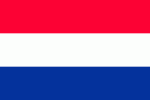
Suriname
Dutch possession
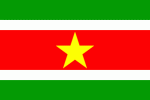
Suriname
Republic
Quick reference
General issues: Dutch colony 1873-1954, Dutch colony/Self government 1954-1975, Republic 1975-Present
Country name on general issues: Suriname
Currency: 1 Gulden = 100 Cents 1873-2004, 1 Dollar = 100 Cents 2004-Present
Population: 82 000 in 1900, 573 000 in 2014
Political history Suriname
The colonial era
Suriname is located in South America. Before colonization the population consisted of several Amerindian peoples. The most important of these were the Arawak and the Carib – peoples widely found along the northern coast of South America and in the Caribbean. The first Europeans to explore Suriname were the Spanish in the 16th century. Suriname was first colonized by the British in the 17th century, occupied by the Dutch in 1667 and formally ceded to the Dutch in 1674. Occupied by the British during the Napoleonic Wars in 1799, Suriname was restored to the Dutch in 1816. Although Suriname is often referred to as ‘Dutch Guiana’, in analogy of the neighboring British Guiana – now Guyana – and French Guiana, the official name of the colony has always been Suriname.
The Dutch developed the coastal region as a plantations colony – growing coffee, cocoa, sugar cane and cotton. The plantations were manned by slaves from Africa until the abolition of slavery in 1863. Escaped slaves sought refuge in the largely unexplored interior forming the population group of the Maroons – a population group that, until today, is one of the distinct population groups in Suriname. After the abolition of slavery, laborers were brought from the Dutch East Indies and British India – further contributing to the multi ethnic character of the population of Suriname. During WWII – in full agreement with the Dutch government – United States forces were stationed in Suriname, from 1941 to 1945, to protect the country, and in particular the bauxite mines.
Self government and independence
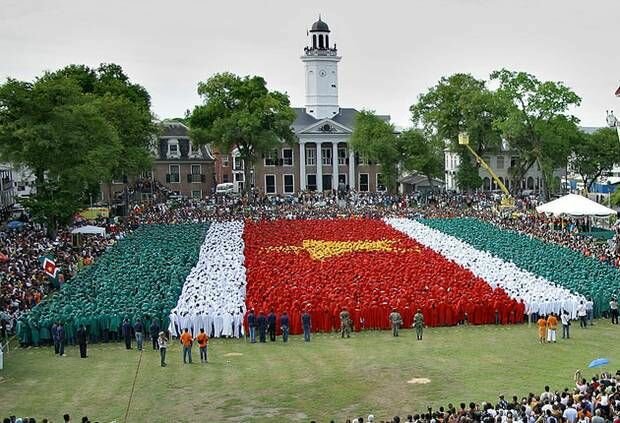
25 November 1975 – Independence
Suriname, in 1954, became one of the constituent parts of the kingdom of the Netherlands, together with the Netherlands Antilles and the Netherlands, and, as such, gained self government. Suriname became independent as the republic of Suriname in 1975. Independence caused about one third of the population to emigrate to the Netherlands. After a military coup in 1980, the country was de facto ruled by the military until 1991 when democracy was restored. Since 1991, Suriname has known democratically elected governments.
Economically, the plantations have, in the 20th century, been replaced as the countries most important source of income by the exploitation of natural resources – in particular bauxite and gold. On the United Nations Human Development Index, Suriname currently ranks 9th out of the 12 countries in South America. The population is diverse. The Indo-Surinamese – tracing their ancestry to British India – are the largest population group, the Creole – of mixed black and white origin – are the second largest population group. Substantial groups are furthermore formed by the Javanese – from the Dutch East Indies – and the Maroons. The Amerindians constitute 2% of the population.
Suriname has border disputes with two of its neighbors: Guyana and French Guiana. Both disputes have their origins in the 19th century and concern sections of the interior of the contesting countries. More than the territories involved, the relevance of the disputes today would seem to be that the disputes strain the relations with the neighboring countries and prevent agreements on the maritime borders off the coast – of importance because of the oil deposits found there. The border with Brazil was fixed by treaty in 1906.
Postal history Suriname
The first stamps were issued by Suriname in 1873. The designs during the colonial period are mostly similar – or identical – to the designs of the Dutch stamps of the time. Most stamps were supplied from the Netherlands and printed by Joh. Enchedé. Some were printed locally in Paramaribo – the 1892 and 1912 sets. During WWII, stamps were printed, in 1941, by Kolff & Co in Jakarta, Indonesia and, from 1941, by Bradbury & Wilkinson in Great Britain. In 1945, two sets were printed by the American Bank Note Co. in New York. Since independence, Suriname has issued stamps with a blend of themes of national interest and themes of interest for the thematic collectors market.
Album pages
← Previous page: Spanish West IndiesNext page: Tobago →

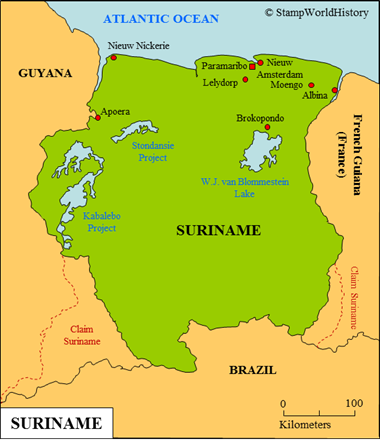
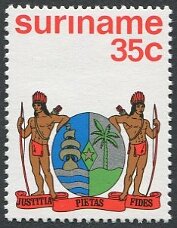
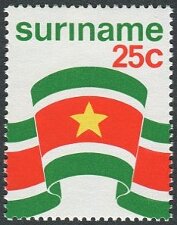




The following interesting fact of the history of Suriname may be involved into this profile. The United States had taken Suriname under their protection (occupied Suriname) on 1941 November 23 under the agreement with the Netherlands government in exile. The occupation lasted till Aug 1945.
Gedi, good to see you back on SWH. Thanks for pointing this out. I guess I came across this but forgot to add it to the profile. I’ll update the profile.